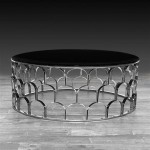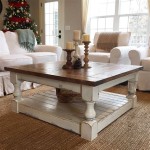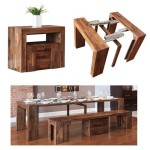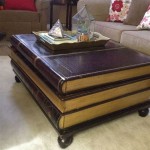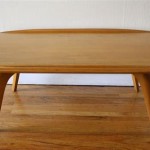Do You Need a Coffee Table? Examining Functionality, Aesthetics, and Alternatives
The question of whether a living room truly *needs* a coffee table is a surprisingly complex one. While often considered a core component of the modern living space, its necessity hinges on a variety of factors, including individual lifestyle, available space, pre-existing furniture, and desired aesthetic. A comprehensive exploration of these elements is essential to determine if a coffee table is truly beneficial for a particular living room.
Historically, coffee tables evolved as low tables designed to complement seating arrangements, particularly sofas and armchairs. Their initial purpose was primarily functional, providing a surface for placing beverages and reading materials. Over time, the coffee table has transformed into a multi-faceted piece of furniture fulfilling various roles extending beyond mere utility.
The decision to incorporate a coffee table into a living room should be a deliberate one, weighing its advantages and disadvantages against specific needs and preferences. A hasty purchase without considering these factors can lead to a cluttered or inefficient space. Conversely, carefully selected and strategically placed, a coffee table can significantly enhance the room's functionality and visual appeal.
Functionality: The Workhorse of the Living Room
The primary justification for owning a coffee table often resides in its functional capabilities. A well-chosen coffee table provides a stable surface for a multitude of activities. Perhaps the most common is serving as a resting place for beverages, preventing spills and keeping drinks within easy reach. This is particularly useful during social gatherings or relaxing evenings at home.
Beyond beverages, coffee tables can accommodate snacks, books, remote controls, and decorative items. They offer a central landing spot for everyday objects, helping to maintain a tidy and organized living space. Models with built-in storage, such as drawers or shelves, further amplify their utility, providing concealed compartments for magazines, blankets, or games.
The functionality extends beyond convenience. A coffee table can also serve as a platform for activities such as playing board games, working on a laptop, or enjoying a casual meal while watching television. The height of the table is crucial here, as a table that is too low or too high will be uncomfortable and impractical for these tasks. The dimensions should allow comfortable access from the seating positions, promoting ease of use and preventing strain.
Furthermore, the surface material contributes to the functionality. A durable, stain-resistant surface is essential for handling spills and resisting scratches. Materials like wood, glass, or stone each offer different performance characteristics and aesthetic appeal, influencing the overall practicality of the coffee table.
Aesthetics: The Centerpiece of the Living Space
Beyond its practical applications, a coffee table plays a significant role in defining the aesthetic of a living room. It often serves as a central focal point, drawing the eye and contributing to the overall visual harmony of the space. The style, material, and shape of the coffee table can greatly influence the perceived atmosphere of the room.
The choice of coffee table should complement the existing furniture and décor. A modern living room, for example, might benefit from a minimalist glass coffee table with clean lines, while a more traditional space could be enhanced by a richly stained wooden table with ornate details. The color and texture of the table should harmonize with the surrounding colors and materials, creating a cohesive and visually pleasing effect.
Consider the shape and size of the coffee table relative to the seating arrangement. A rectangular coffee table is a common choice for longer sofas, while a round or oval table might be more suitable for smaller or more intimate seating areas. The size of the table should be proportional to the size of the room, avoiding overcrowding or feeling dwarfed by the surrounding furniture.
The coffee table also provides an opportunity to showcase personal style. Decorative items, such as books, vases, candles, and trays, can be arranged on the table to create a visually appealing vignette. These elements add personality and character to the space, reflecting individual tastes and interests. However, it's important to avoid excessive clutter, maintaining a balance between decoration and functionality.
Alternatives and Space Considerations: Thinking Outside the Traditional Table
For smaller living rooms or individuals who prefer a more minimalist aesthetic, numerous alternatives to the traditional coffee table exist. These options can provide similar functionality while optimizing space and creating a unique visual impact.
Ottomans, for example, offer a versatile alternative. They can serve as footrests, provide additional seating, and, when topped with a tray, function as a coffee table. Ottomans are particularly useful in smaller spaces as they can be easily moved and reconfigured to suit different needs. Models with built-in storage further enhance their utility, providing concealed compartments for blankets and other items.
Nested tables are another space-saving option. These sets typically consist of two or three tables of varying sizes that can be nested together when not in use. They can be pulled apart as needed to provide extra surface area, making them ideal for entertaining or accommodating multiple users. Nested tables offer flexibility and adaptability, making them a practical choice for smaller living rooms.
C-tables, so-called for their C-shaped design, are designed to slide under sofas or chairs, providing a convenient surface for laptops, drinks, or snacks. They are particularly useful for individuals who prefer to work or relax on the sofa. C-tables are lightweight and easily portable, making them a versatile addition to any living space.
Floor cushions can serve as a low-profile alternative to a coffee table. While they don't provide a hard surface, they can be used to support books, magazines, or decorative items. Floor cushions create a relaxed and informal atmosphere, making them suitable for bohemian or minimalist living spaces.
When considering alternatives, it's essential to evaluate the specific needs and constraints of the living room. Factors such as available space, existing furniture, and personal preferences should all be taken into account. The goal is to find a solution that provides adequate functionality without sacrificing style or creating a cluttered appearance.
The height of the seating is also a critical factor when considering alternatives. A low-slung sofa might pair well with floor cushions or a low ottoman, while a higher sofa might require a C-table or a taller nested table. The objective is to create a comfortable and functional arrangement that meets individual needs.
Ultimately, the decision of whether or not to incorporate a coffee table into a living room is a matter of personal preference and practical considerations. By carefully evaluating the functional benefits, aesthetic contributions, and alternative options, one can determine whether a coffee table is truly necessary or if a different solution might better suit the space and lifestyle.

How To Choose A Coffee Table Or Ottoman Plus 15 Favorites

No Room For A Coffee Table Think Again

Console Table Vs Coffee Which Do You Need

Do People Still Use Coffee Tables

The Effortless Way To Style A Coffee Table New York Times

10 Small Space Coffee Tables Ideas For Living Rooms Adria

5 Things To Know Before A Coffee Table Visualhunt

Coffee Tables Target

13 Best Coffee Tables To Inspire Your Living Room Makeover Drew Jonathan

27 Coffee Table Decor Ideas How To Style A Modern
Related Posts


